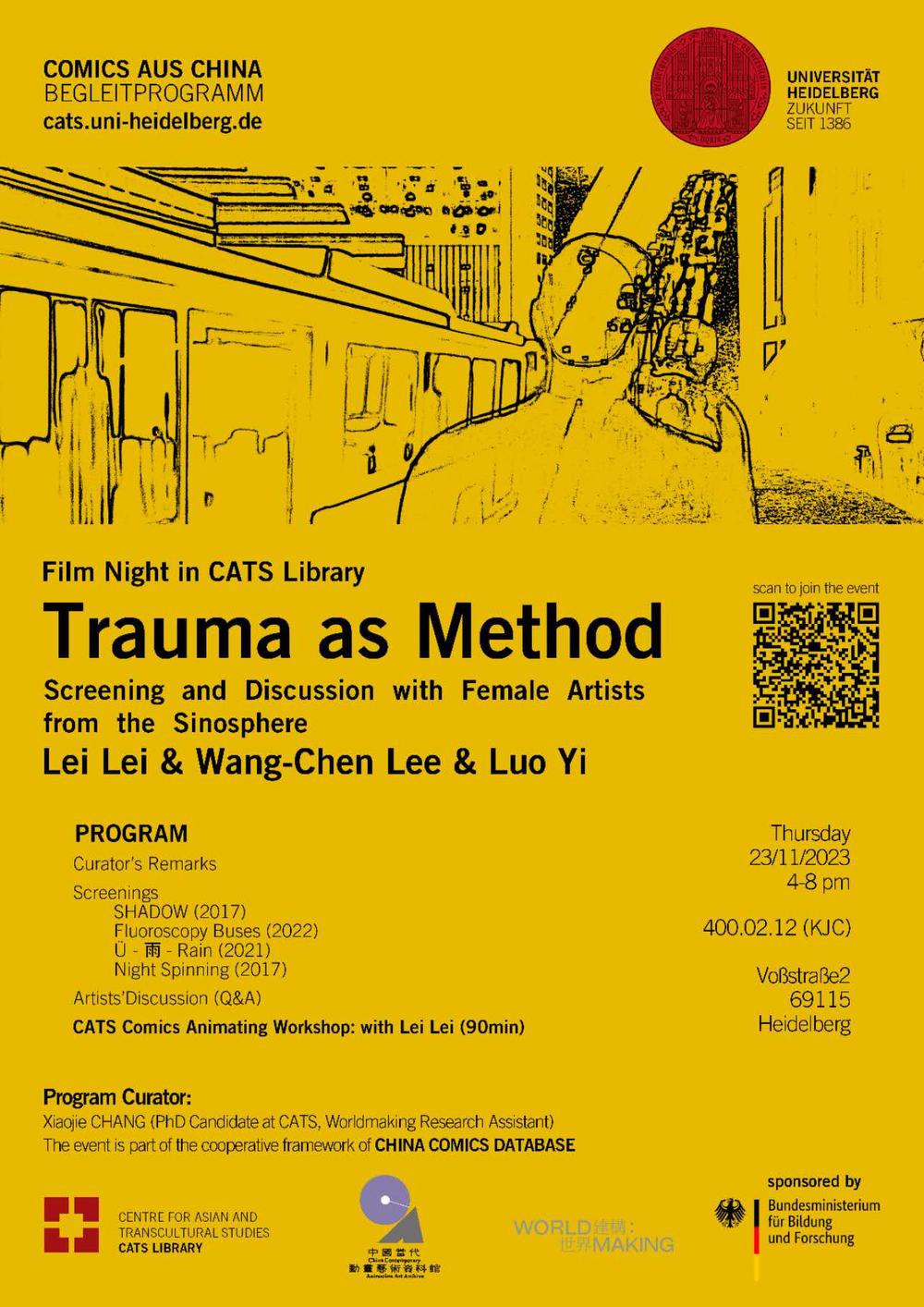Workshop "Trauma as method – Screening/Discussion/Workshop with Female Artists from the Sinophone World"
Workshop "Trauma as method – Screening/Discussion/Workshop with Female Artists from the Sinophone World"
The Heidelberg Project Epochal Life Worlds: Man, Nature and Technology in Narratives of Crisis and Change would like to cordially invite you to the hybrid event "Trauma as method – Screening/Discussion/Workshop with Female Artists from the Sinophone World".
Date:
Thursday, November 23, from 4 pm to 8 pm
Venue:
On-site: KJC, Voßstr. 2, 69115 Heidelberg, room 400.02.12
Virtual: https://heiconf.uni-heidelberg.de/ckpc-zm9n-zwyh-4xv3.
Program:
During the first part "Screening: Trauma as Method", multiple animation films will be presented, which were created by three brilliant animation artists from the Chinese-speaking regions: Lei Lei from Hangzhou, Luo Yi from Tianjin and Wang-chen Lee from Taipei. All animation films revolve around the theme of trauma, highlighting how trauma could serve as a method (consciously or otherwise) to confront the ever-present problematics of our everyday life. In the following workshop “Semantic Association in Image Combination — A + B ≈ C”, the artist Lei Lei will interact with the audience and provide an on-site tutorial on how to transform static images into animations using Chinese comics from the CATS library.
This event is organized and sponsored by the Heidelberg Center for Worldmaking Project Epochal Life Worlds: Man, Nature and Technology in Narratives of Crisis and Change, CATS Library and China Contemporary Animation Art Archive.
The Worldmaking Project focuses on catastrophes and moments of crisis and their changes in life worlds. Husserl speaks of "our everyday life-world" (unsere alltägliche Lebenswelt) as the world which man experiences at every point of his existence as immediately and simply given. The word “Trauma” originates from the Ancient Greek τραῦμα (traûma), meaning wound or damage. In modern usage the word opts for abstract meaning as well, namely emotional, psychological trauma. In the context of the animations presented, we observe trauma functioning as a method/driving force through which we are forced to re-approach and redefine the emotional aspects of our life world. By providing a new program with challenges in which the self needs to redefine itself, trauma marks the beginning of a new epoch on the personal level. The Chinese artists Lei and Luos’s works portrait the experiences related to trauma with the little girl’s suffering from long-lasting fear and shame of the sexual violence, the human struggling for freedom in the suffocating dystopian metropole, or the kafkaesque transformation of a heartbroken young woman’s body into the globe and the Rubik's Cube. Wang’s short film, however, offers a humorous metaphor of the failed attempt to repair the wounds of the roof. So the questions need be asked, how can the animating of traumatic experiences contribute to a stronger resilience of the human spirit? As for several films portrait the nightmares of the females, what is the female’s situation in experiencing and recovering from trauma?
In the following workshop “Semantic Association in Image Combination — A + B ≈ C”, Lei Lei will engage in discussions with the live audience and collect ideas. Using the facial expressions, props and scenes from the Chinese comic “Dangerous Roads” (危险的路, Shanghai 1957), she will transform the static pictures into animated form, creating new interpretative possibilities.
We look forward to the communication that these works will inspire, and we are very grateful to our talented artists for their courage and creativity in bringing these films to life.

